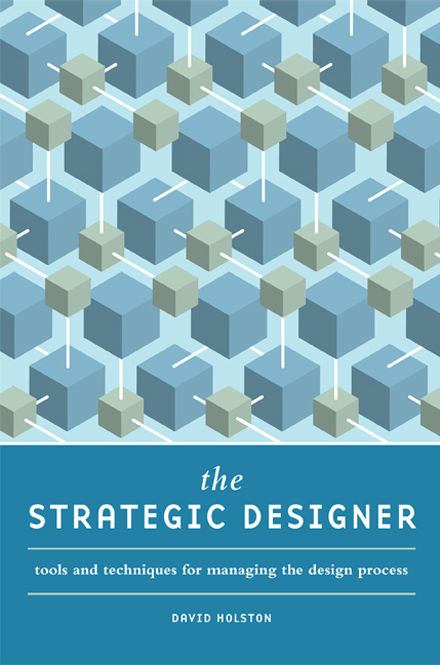The Strategic Designer – Tools for Managing the Design Process
Article by Martin Gibson – Twitter: @martingibson @embody3d – 30.08.2011
The Strategic Designer – Tools for Managing the Design Process by David Holston published by How Books is a 291 page theoretical work on understanding design and how to be good at it. Some would say this is a pretty well understood and unswervingly defined area of study. But design is an evolving field with changing values, customers and marketplaces, and no-one truly knows the subconscious framework behind a great designer or design piece. The need for good design theory is so important for the modern designer, there is just so much competition for jobs and work, one needs to find every avenue available to stand out from the crowd. The Strategic Designer tackles the big and difficult to explain questions like:
- What is design?
- What do designers do?
- How do you design?
- What makes a good designer?
- Can design be taught?
And it is when you unravel these secretly difficult concepts that you learn how to exploit yourself to become better. Holston suggests the new designer for this century is required to embrace complexity, be collaborative, design in context and be accountable. The book covers some interesting topic areas like wicked problems and the divergence and convergence of the design process and thinking outside the box. Not to mention really wise ways of managing clients, by far the most difficult part of the whole design process and one I can personally testify to. Holston isn’t scared to not just disclose what to look for in clients but also defines what type of clients to run for the hills for. The whole design process is covered in the book from concept ideation to market research, prototyping and testing all the way through to business management and entrepreneurship. The Strategic Designer provides insight into future markets, and future demographics and equips designers in all stages of their career how to prepare and forecast the strategic position of their businesses and workplaces to suit this environment.
One of the real highlights of the book from my perspective was the great creative brainstorming techniques outlined which have challenged me to be creative and try different strategies. This mixed bag of techniques has equipped me to tackle in particular complex problems from different angles which for me has proven to be successful.
Like many books that we get the opportunity to review The Strategic Designer won’t give you chronological implementation methodologies, but rather give you over-arching themes/principles that you can build upon and deploy. The book remains neutral discipline-wise throughout, whether you are a graphic designer or industrial designer you will find the learnings equally applicable. The Strategic Designer escapes controversy, it escapes astonishment, but still manages to cover all bases on general design theory. The book is holistic; you never feel the need to seek answers elsewhere. If an issue is raised Holston will explore every concept associated that particular issue and beyond. For example pages upon pages are dedicated just on how to talk and empathise with clients. Of course some readers will find this overbearing whereas others will revel in its intricacy. Holston consults documented texts and renowned scholars to bolster his arguments and also cites personal experience to give authority and understanding to his key points. The text itself isn’t highly technical and is highly digestible despite lacking any imagery whatsoever…not exactly designer friendly perhaps.
I think this is a really well-balanced and well structured book, textbook if you will. A definite necessity for any design student or professional who wants to better understand their discipline and strive to be different and more accomplished.
[rating:4.5]




0 Comments
Martin, Thank you for your insightful and well written review of the book. I think you’ve done a good job of capturing the intent of the book. It would be great if you could share your review on Amazon.
Thanks again, Dave